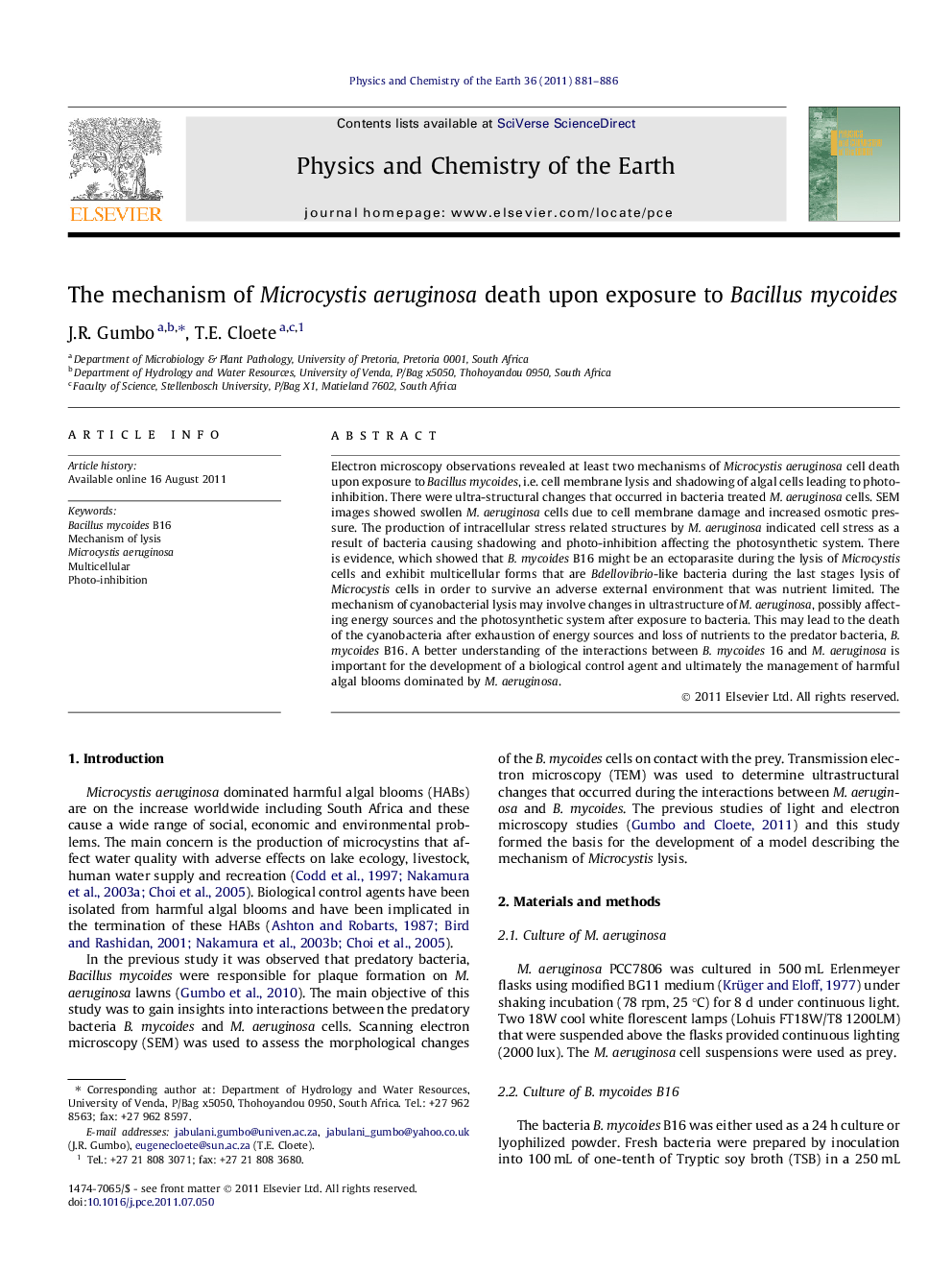| کد مقاله | کد نشریه | سال انتشار | مقاله انگلیسی | نسخه تمام متن |
|---|---|---|---|---|
| 4721304 | 1639374 | 2011 | 6 صفحه PDF | دانلود رایگان |

Electron microscopy observations revealed at least two mechanisms of Microcystis aeruginosa cell death upon exposure to Bacillus mycoides, i.e. cell membrane lysis and shadowing of algal cells leading to photo-inhibition. There were ultra-structural changes that occurred in bacteria treated M. aeruginosa cells. SEM images showed swollen M. aeruginosa cells due to cell membrane damage and increased osmotic pressure. The production of intracellular stress related structures by M. aeruginosa indicated cell stress as a result of bacteria causing shadowing and photo-inhibition affecting the photosynthetic system. There is evidence, which showed that B. mycoides B16 might be an ectoparasite during the lysis of Microcystis cells and exhibit multicellular forms that are Bdellovibrio-like bacteria during the last stages lysis of Microcystis cells in order to survive an adverse external environment that was nutrient limited. The mechanism of cyanobacterial lysis may involve changes in ultrastructure of M. aeruginosa, possibly affecting energy sources and the photosynthetic system after exposure to bacteria. This may lead to the death of the cyanobacteria after exhaustion of energy sources and loss of nutrients to the predator bacteria, B. mycoides B16. A better understanding of the interactions between B. mycoides 16 and M. aeruginosa is important for the development of a biological control agent and ultimately the management of harmful algal blooms dominated by M. aeruginosa.
► Bacillus mycoides B16 is an ectoparasite during the lysis of Microcystis cells.
► The mechanism of Microcystis aeruginosa lysis involves depletion of its energy sources, destruction of photosynthetic system and loss of nutrients to the predator bacteria.
Journal: Physics and Chemistry of the Earth, Parts A/B/C - Volume 36, Issues 14–15, 2011, Pages 881–886